The years-long investigation into the 2021 Miami condo collapse, which killed 98 people, has placed blame on faulty support columns in the tenant’s garage and adjoining pool deck.
Federal investigators at the National Institute of Standards and Technology said this week that tests show some of the steel-reinforced concrete columns in the condemned condominium were half the strength they should have been.
They have concluded that many of the columns in the doomed Champlain Towers South building were not up to par even in 1980, the year the 12-story tower was built.
Investigators discovered that the pool deck was the fatal weak point that caused the collapse, after witnesses said it fell into the garage up to seven minutes before the fatal collapse on June 24, 2021.
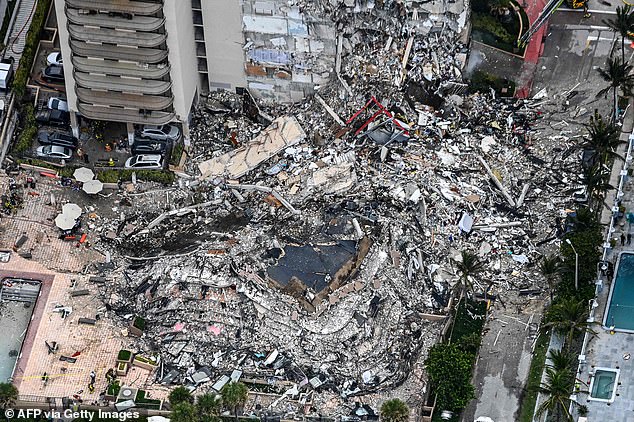
Investigators said this week there is “strong evidence” that the cause of the fatal collapse of the Champlain Towers South building in June 2021 originated from the pool deck.
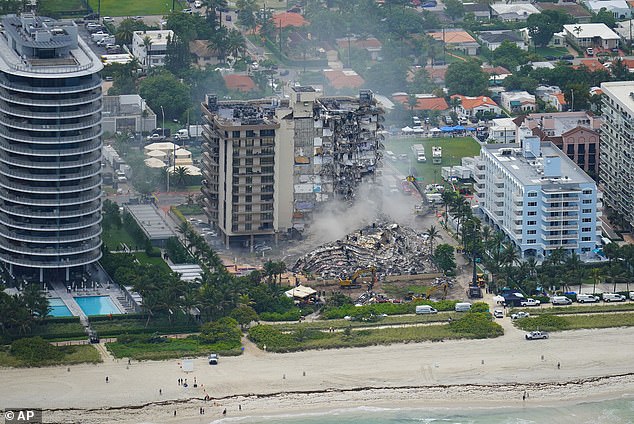

The devastating collapse killed 98 people.
Theories that the pool deck caused the catastrophe emerged almost immediately after the collapse, when videos emerged showing water and debris rushing into the parking lot.
Investigators say there is “strong evidence” that the pool’s concrete deck, which was attached to the building, caused the collapse after its failure likely destabilized the base of a support beam that spanned the tower’s lower level. .
When that beam failed, it caused the section of the tower to collapse and a neighboring section to fall on top of it, according to this week’s report.
Glenn Bell, one of the lead investigators, said: “We believe we now have very conclusive evidence that the pool deck collapsed in front of the tower.”
However, Bell stressed that the results are preliminary and will not be official until all testing is completed and the final report is issued next year, which is now expected in September 2025 after several delays.
“What we are still analyzing is what the initiating events were,” he continued.
‘The implications of our recommendations are very large and we feel pressure to get it right. It may not be easy to achieve the changes that may be necessary based on the lessons we have learned.”
The investigation has cost nearly $30 million, but it cannot change state and local building codes, although it can make recommendations.
While this week’s report was not definitive about the cause, it did seek to rule out several other theories, including rejecting the hypothesis that a sinkhole opened up in the limestone beneath the tower.
Allegations of uneven settlement in the building’s foundation were also ruled out, as investigators found there was a “very low probability” that either was a contributing factor.
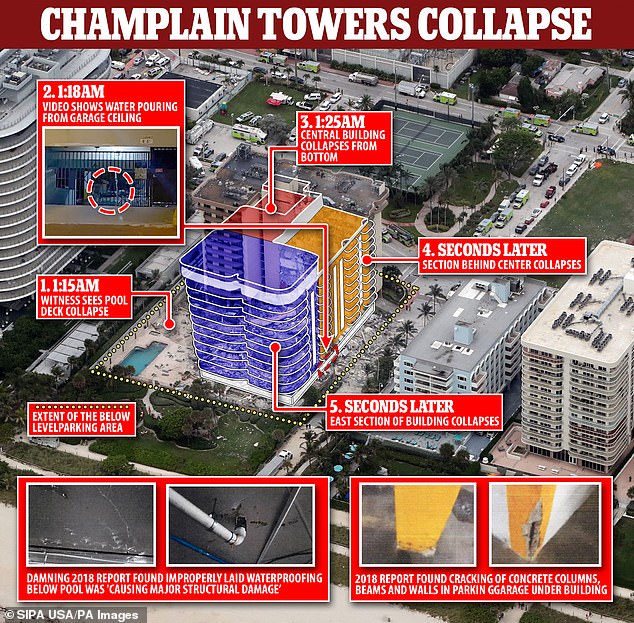

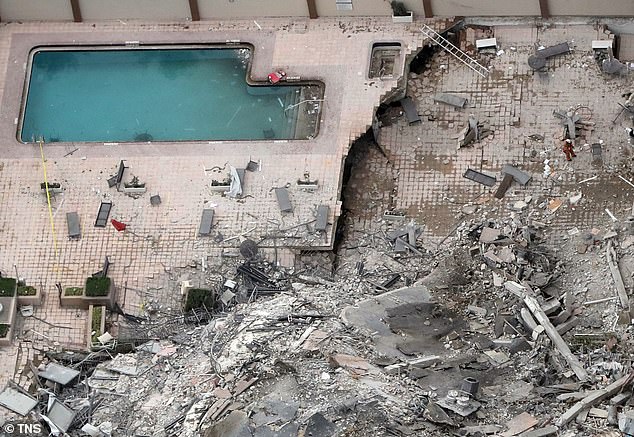

A close-up of the debris taken on June 24, 2021, just hours after the collapse, shows how part of the pool deck had given way and crumbled.
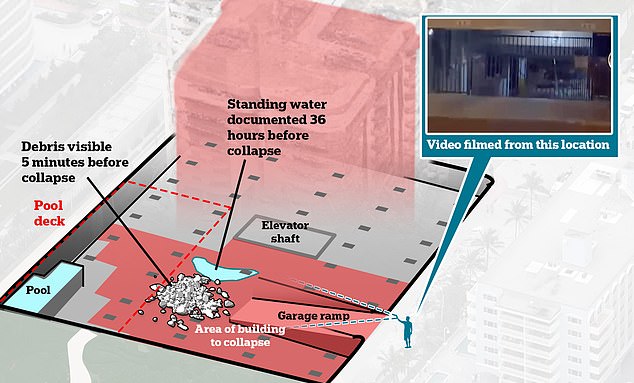

Footage taken from the street showing water flooding the parking lot has been seen as further evidence that the complex imploded from the pool deck inward, engineers say.
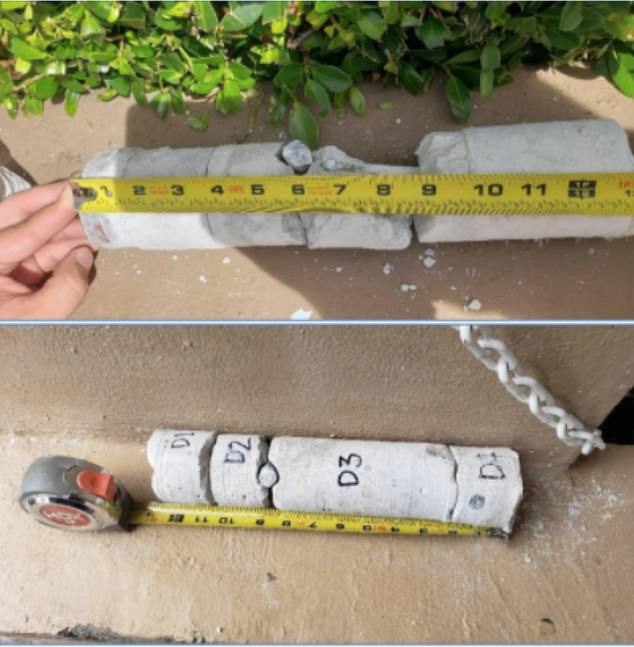

A year before the collapse, drilling was carried out up to a foot deep to determine the structure of the concrete beneath. The work “produced some curious results as far as the depth of the structural slab was concerned,” but the reason why the results were “curious” was not explained at the time.
Investigators stressed that several questions remain to be answered, primarily whether the pool deck collapsed on its own or if something inside the building caused it.
Evidence supporting the theory that the platform failed on its own includes photographs taken weeks before the collapse that show large cracks in the concrete planters that lined the pool area. That shows the platform was already under stress, researchers said.
Surviving tenants also reported hearing loud bangs from inside the walls before the platform failed, which investigators said was evidence that something happened inside the tower that caused the platform to collapse.
Potential issues with the pool deck had already been raised, including a collapsed section where Frank Morabito, an engineer hired by the collapsed tower association, identified severe concrete erosion in 2018.
It’s also around where a contractor saw water forming in a puddle just 36 hours before the collapse.
In 2020, drilling had also been done up to thirty centimeters deep to determine the structure of the concrete beneath.
The work “gave some curious results as regards the depth of the structural slab”, but the reason why the results were “curious” was not explained at the time.
While much of the attention has focused on vulnerabilities in the pool deck, it is also possible that the collapse was caused by the failure of columns on the southern edge of the tower.
Investigators found significant erosion at the bottom of several columns, caused in part by flooding in the parking lot, which may have caused the pool deck and then the tower to collapse, according to the The Miami Herald.
While doubts remain, some survivors have criticized the ongoing investigation into the tragedy, feeling that it has taken too long to determine what happened, and that the final report is still not expected until September 2025.
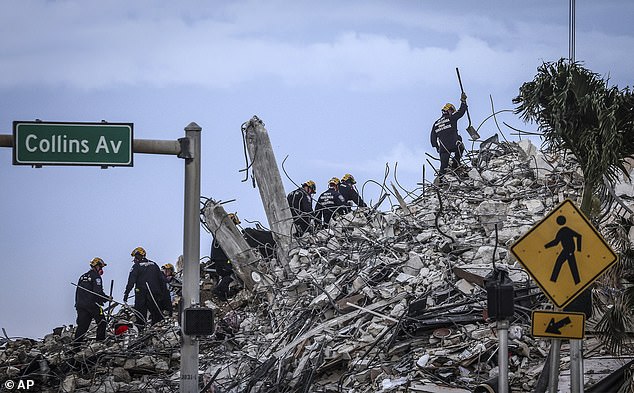

Workers continued searching for survivors at the site on July 5, 2021, a day after the remaining portion of the structure was demolished to aid search efforts.
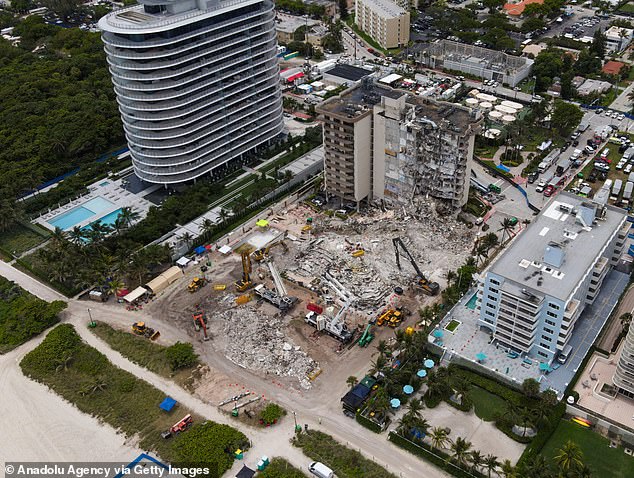

An aerial view of the site weeks after the collapse shows the rescue operation at the Champlain Tower
Pablo Langesfeld, whose daughter Nicole, 26, died in the collapse along with her husband, Luis Sadovnic, criticized the investigation, noting that prosecutors have said they cannot determine whether any criminal charges are warranted until the federal investigation is complete. .
“I understand the complexities of such an investigation, but almost three years later, 40 employees and about $30 million spent and still no solid answers, that is not acceptable,” Langesfeld said.
“It’s frustrating that justice and accountability don’t seem to be in sight.”
Lawsuits filed after the collapse by victims’ families and survivors were settled in less than a year, with more than $1 billion divided.
The money came from various sources, including insurance companies, engineering firms and a luxury condominium that had recently been built next door. Neither party admitted wrongdoing.

